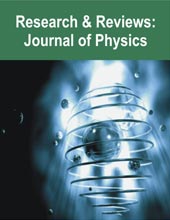
D.P.S. Rathore,
- Ex- Scientific Officer -G Atomic Minerals Directorate for Exploration and Research, Department of Atomic Energy, Jaipur Rajasthan India
Abstract
Pulsed LED-fluorimetry is a highly sensitive, versatile, and well-documented field technique for the
direct determination of uranium in water samples at the μgL-1
levels. Pulsed LED-fluorimetry has been utilized to assess uranium in a variety of matrices, including mineralized rocks, ores, beneficiation
products, and other matrices, without the need for any kind of separation method. Using the high
sensitivity of pulsed LED-fluorimetry, interferences from related and auxiliary elements are removed
by a straightforward one-step dilution of the sample aliquots using push-button microliter pipettes,
bringing the uranium concentration within the instrument’s operating range. To improve the
fluorescence, the measurement was carried out using the differential technique method, which uses a
more appropriate acidic buffer mixture of H3PO4-NH4H2PO4 (pH ~2.5, with H3PO4 at 1 M and
NH4H2PO4 at 2.17 M). In fact, it is the design of the entire experimental procedure in such a way that
for very diluted sample solutions, the prefilter (species absorbing at the laser wavelength of 337 nm,
LED wavelength of excitation at 400 nm) and postfilter (species absorbing at the maximum fluorescence
wavelengths, 480-560 nm) effects are negligible (which is verified by spectrophotometry). The
differential technique is a self-standardized methodology traceable to international standards. This
paper describes the historical development and potentiality of versatile portable LED-Fluorimeter
available in the market in the world as on today for reliable measurement of uranium in water, rocks,
minerals, concentrates, and other diverse matrices.
Keywords: LED fluorimeter, Development of instrumentation, Uranium, Water, Rocks, Minerals, Concentrates and diverse matrices
[This article belongs to Research & Reviews : Journal of Physics(rrjophy)]
References
1. Balaram V, Rani A, Rathore DP. Uranium in groundwater in parts of India and world: A comprehensive review of sources, impact to the environment and human health, analytical techniques, and mitigation technologies. Geosyst Geoenviron. 2022 May 1;1(2):100043.
2. World Health Organization. Uranium in drinking-water: background document for development of WHO guidelines for drinking-water quality. Geneva: World Health Organization; 2004.
3. Editorial Staff. Significance of Mineralogy in the Development of Flowsheets for Processing Uranium Ores. Technical Report Series No. 196. IAEA; 1980.
4. Quantalase Enterprises Pvt Ltd. Indore, India. Available from: https://quantalase.in/
5. Balaram V, Sawant SS. Indicator minerals, pathfinder elements, and portable analytical instruments in mineral exploration studies. Minerals. 2022 Mar 23;12(4):394.
6. Robbins JC. Field technique for the measurement of uranium in natural waters. CIM Bull. 1978;71:61-7.
7. Robbins JC, Kinrade JD. Method for uranium determination. US Patent 4,239,964A. 1980.
8. Rathore DPS. Advances in technologies for the measurement of uranium in diverse matrices. Talanta. 2008 Oct 19;77(1):9-20.
9. Billard I, Ansoborlo E, Apperson K, Arpigny S, Azenha ME, Birch D, et al. Aqueous solutions of uranium (VI) as studied by time-resolved emission spectroscopy: a round-robin test. Appl Spectrosc. 2003 Aug 1;57(8):1027-38.
10. Moulin C, Decambox P, Trecani L. Direct and fast uranium determination in zirconium by time resolved laser-induced fluorescence spectrometry. Anal Chim Acta. 1996 Mar 8;321(1):121-6.
11. Moulin C, Decambox P, Moulin V, Decaillon JG. Uranium speciation in solution by time resolved laser-induced fluorescence. Anal Chem. 1995 Jan 1;67(2):348-53.
12. Rathore DPS. Trends in the methods of measurement in analytical chemistry. Explor Res Min. 2007;17:145-9.
13. Prabhu SP, Sawant PD, Raj SS, Kumar A, Tripathi RM, Sarkar PK. Application of fission track technique for estimation of uranium concentration in drinking waters of Punjab. J Radioanal Nucl Chem. 2012;294:443-6. DOI: 10.1007/s10967-011-1503-2.
14. Rathore DPS. Letter to HERA’s Editor concerning the article “Risk Assessment for Natural Uranium in Subsurface Water of Punjab State, India” (Kumar et al. 2011a). Hum Ecol Risk Assess. 2013 Sep 3;19(5):1147-9.
15. Rathore DPS. Query related to publication titled Geochemical modeling of uranium speciation in the subsurface aquatic environment of Punjab State in India. J Geol Min Res. 2011;3(5): 137-46.
16. Rathore DPS. Letter to Editor: Query related to publication titled “A comparative analysis of uranium in potable waters using laser fluorimetry and ICPMS techniques” by Shenoy et al. 294:413-417 (2012), doi: 10.1007/s10967–012-1705–2. J Radioanal Nucl Chem.2013;298:721-3. DOI: 10.1007/s10967-013-2445-7.
17. Rathore DPS, Garg VK. Comments on uranium concentration in groundwater in Hisar city, India. Int J Occup Environ Med. 2014;5:169-70. PubMed: 25027046.
18. Rathore DPS. Uranium exploration. Curr Sci. 2014 Mar 25;106:792.
19. Rathore DPS. Letter to the Editor: Comments related to the publication titled “Uranium in ground water from Western Haryana, India” by Balvinder Singh, V. K. Garg, Poonam Yadav, Nawal Kishore, Vandana Pulhani, J Radioanal Nucl Chem, DOI 10.1007/s10967–014-3133-y, Published online: 13 April 2014. J Radioanal Nucl Chem. 2014;302:745-6. DOI:10.1007/s10967-014-3392-7.
20. Rathore DPS. Comments on: Studies on Effective Decomposition of Monazite Minerals by Variety of Phosphate Fluxes for Simple and Direct Determination of Uranium by LED Fluorimeter. Chem Sci J. 2017;8(154):1935.
21. Rathore DPS. Heavy toxic elements distribution in the drinking water samples. Adv Recycling Waste Manag. 2017;2(146):2.
22. Rathore DPS. Comments on large-scale uranium contamination of groundwater resources in India. Environ Sci Technol Lett. 2018 Aug 2;5(9):591-2.
23. Rathore DPS, Tarafder PK, Balaram V. Challenges for reliable analysis of uranium in natural waters using laser-induced fluorimetry/LED-fluorimetry in the presence of fluoride and diverse humic substances in hot arid regions and future advances – Review. Environ Sci: Adv. 2024;3:511-21. DOI: 10.1039/D3VA00318C.
24. Rathore DPS, Tarafder PK, Balaram V, Mishra M, Pari J, Bhujle AG, Bhawalkar DD. Application of a differential technique in laser-induced fluorimetry/pulsed LED-fluorimetry: simple and reliable analysis of uranium raw materials in the nuclear fuel cycle – a mini-review.Environ Sci Adv. 2023;2:1340–50. doi: 10.1039/D3VA00134B.
25. Rathore DPS. Application of differential technique: A self-standardized and an absolute methodology: brief communication. Int J Appl Sci Res Rev. 2024;11:056

Research & Reviews : Journal of Physics
| Volume | 13 |
| Issue | 01 |
| Received | June 14, 2024 |
| Accepted | July 1, 2024 |
| Published | August 2, 2024 |

